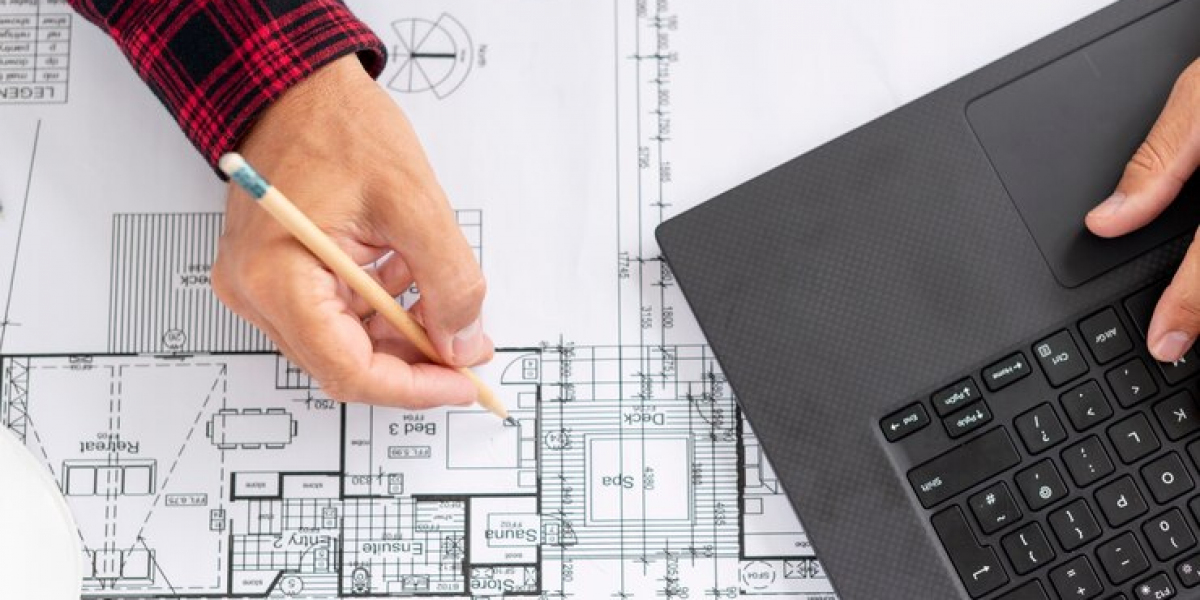In the world of construction, a solid plan is as crucial as the materials used. For architects and building owners, understanding the significance of construction shop drawings in the building process can spell the difference between a seamless project and one fraught with challenges.
This blog post will explore the pivotal role that shop drawings play, from ensuring accuracy and enhancing communication to establishing compliance and paving the way for future innovations. By the end of this read, you'll grasp not only their importance but also how they can become your greatest ally in any construction endeavor.
Understanding Construction Shop Drawings
Construction shop drawings are detailed and precise diagrams or plans created by contractors, fabricators, or suppliers. Unlike the general design drawings developed by architects, these are refined documents that depict how specific components of a building are to be manufactured or installed. They serve as a bridge between the architect's vision and the practical execution on the construction site.
These drawings include detailed specifications for elements such as steel beams, ductwork, electrical conduits, and more. They ensure that all parties involved in the construction process have a clear understanding of what is required, down to the smallest detail. By aligning the design intent with practical execution, shop drawings help prevent misinterpretations and errors that can lead to costly rework.
The role of shop drawings extends beyond mere visualization. They provide a comprehensive roadmap, guiding constructors on how each component fits into the larger structure. This detailed guidance underscores their critical importance in achieving accuracy and efficiency in construction projects.
The Importance of Accuracy
Accuracy in construction is paramount. Precise shop drawings can save significant time and costs by minimizing errors and miscommunications. When shop drawings are meticulously crafted, they detail exact dimensions, materials, and processes, leaving little room for guesswork or assumptions.
Inaccuracies in construction can lead to delays, wasted materials, and increased labor costs. For instance, a minor error in the dimensions of a steel beam could result in structural instability or the need for replacement, both of which are costly setbacks. Accurate shop drawings act as a safeguard against such issues, ensuring that every part fits perfectly as designed.
Beyond immediate financial savings, accurate shop drawings enhance the overall quality and longevity of a building. By adhering to precise specifications, constructors can achieve greater structural integrity and durability, delivering a product that stands the test of time.
Enhancing Communication
Effective communication is at the heart of successful construction projects. Shop drawings serve as a universal language, enabling architects, engineers, and contractors to collaborate seamlessly. They provide a common reference point that all parties can rely on, reducing misunderstandings and facilitating smoother project execution.
When each stakeholder has access to the same detailed information, it fosters transparency and accountability. Architects can ensure that their design intent is being accurately translated, while contractors gain a clear understanding of the requirements and constraints. This shared understanding leads to more efficient decision-making and problem-solving on-site.
In addition to improving communication among team members, shop drawings also enhance interactions with clients and building owners. By presenting clear and detailed plans, project managers can articulate the construction process more effectively, building trust and confidence with stakeholders.
Compliance and Standards
In the construction industry, compliance with regulatory requirements and standards is non-negotiable. Shop drawings play a crucial role in ensuring that projects meet these rigorous standards, from safety regulations to building codes. They serve as a vital tool for verifying that design specifications align with legal and regulatory guidelines.
By incorporating compliance checks into the shop drawing process, architects and engineers can identify potential issues before they become costly problems. This proactive approach not only ensures adherence to standards but also mitigates the risk of legal liabilities and project delays.
Shop drawings also facilitate the inspection and approval process. Regulatory bodies and inspectors rely on these detailed documents to assess whether a construction project aligns with the required standards. Well-prepared shop drawings streamline this process, expediting approvals and keeping the project on track.
Streamlining Project Coordination
Project coordination in construction involves managing numerous moving parts. Construction shop drawings guide simplify this complex task by providing a clear and detailed roadmap for all stakeholders. They outline how each component of the project interacts with others, ensuring that everything fits together seamlessly.
By offering a comprehensive overview of the construction process, shop drawings help project managers coordinate schedules, allocate resources efficiently, and anticipate potential bottlenecks. This level of coordination minimizes disruptions and keeps the project timeline on track.
Furthermore, shop drawings empower teams to address unforeseen challenges with agility. When issues arise, having detailed plans readily available allows for swift adjustments without compromising the overall project integrity. This adaptability is essential for maintaining momentum and delivering successful outcomes.
Reducing Rework and Waste
Rework and material waste are significant contributors to construction inefficiencies. Inaccurate or incomplete drawings often lead to misunderstandings and costly rework. Construction shop drawings, when meticulously prepared, act as a preventive measure against these errors.
By providing detailed assembly instructions and precise measurements, shop drawings minimize the risk of errors during fabrication and installation. This reduction in errors translates into less rework and material waste, resulting in substantial cost savings for the project.
The financial benefits extend beyond savings on materials and labor. Reduced rework and waste contribute to a more sustainable construction process, aligning with environmental goals and enhancing the project's overall reputation.
The Role of Technology in Modern Shop Drawings
Technology is revolutionizing the way construction shop drawings are created and utilized. Advanced software and digital tools have transformed traditional drafting methods, allowing for greater precision and efficiency in the drawing process.
Computer-aided design (CAD) software enables architects and engineers to create detailed 3D models, providing a more accurate representation of the final structure. These digital models enhance visualization and allow for better collaboration among project teams.
Furthermore, technology facilitates real-time updates and changes to shop drawings. As projects evolve, digital tools enable rapid adjustments, ensuring that all stakeholders have access to the most current information. This adaptability is crucial for responding to dynamic construction environments and maintaining project alignment.
The Future of Shop Drawings
The future of construction shop drawings is poised for exciting advancements. Emerging technologies such as Building Information Modeling (BIM) and augmented reality (AR) are set to revolutionize the way shop drawings are created and utilized in construction projects.
BIM technology enables the creation of highly detailed 3D models that integrate all aspects of a building's design, from architecture and engineering to structural and MEP systems. This holistic approach enhances collaboration among stakeholders, streamlining the design and construction process.
Augmented reality offers the potential to overlay digital shop drawings onto physical construction sites, providing real-time guidance and reducing the risk of errors during installation. This innovative technology enhances accuracy and efficiency, paving the way for more seamless project execution.
Conclusion
In the intricate world of construction, the importance of shop drawings services cannot be overstated. These detailed documents serve as the backbone of successful projects, ensuring accuracy, facilitating communication, and upholding compliance with industry standards.
For architects and building owners, investing in precise and comprehensive shop drawings is a strategic decision that pays dividends in cost savings, improved project outcomes, and enhanced collaboration. As technology continues to evolve, the future of shop drawings holds even greater promise, offering innovative solutions for the challenges of modern construction.
To harness the full potential of construction shop drawings and ensure your projects are primed for success, consider integrating these essential tools into your building process. Explore further resources and connect with industry experts to stay at the forefront of innovation in construction.









